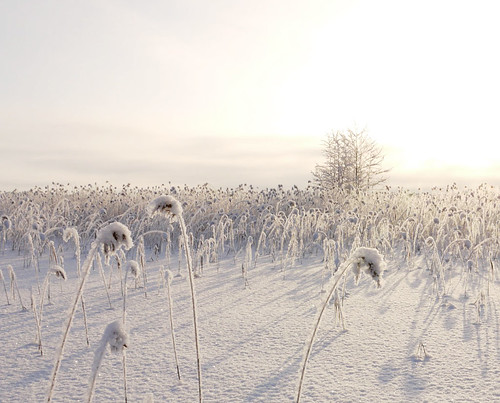"when you take a picture, put the sun over your shoulder"
no wonder all our family photo's show people squinting.
While the lighting on that is at least predictable to work out, its not ideal and tends to look un-interesting to me at least. Everything looks a little samie samie, so I like to do things sometimes which go against the rules, like shooting into the sun, which gives me results like this:

now this is a digital and while its a nice picture, I think it looks a bit awful in the sky around the sun ... now if it wasn't for the fact that I've used negative film for years I would not have any other expectation. Note the nasty colour cast shifts around the sun where the clouds go red (as the channels blow out at different rates).
Now, lets look at the same thing photographed using (400ISO negative):

Not bad is it. Actually I often use my digital to make a metering evaluation when I'm using film on my big camera which doesn't have a light meter (though don't bother when using my EOS film camera cos its light meter is something I'm already used to and Negative has so much margin for error), I expose for the shadows and let the high lights fall where they may. Now at the time of taking this, I took some different exposures and focus settings ... so here is a scan of these frames all laid out on the flatbed (this is 6x12 size on 120 roll), being this size they won't fit into holders in pairs of negs, so they get cut into singles.

no matter which exposure you look at (my exposure above came from one of these) the sun isn't blown out among the clouds (meaning you can see where it is).
This really shows how well film does in this sort of high contrast environment.
 I was in Tampere yesterday taking some photographs, and having this information up my sleeve I thought I would try something like this with the digital.
I was in Tampere yesterday taking some photographs, and having this information up my sleeve I thought I would try something like this with the digital.This image is a HDR from exposures spaced 2EV either side of "normal".
Looking at this it is interesting, because while the level of blowing of clouds is better than the top pictured digital image, its still not as good at handling the high contrast as the film image in my opinion, and this is HDR.
For gods sake just how much head room do you have in Negative? Well that's not a fair question as one of the characteristics of negative is a built in rolling compression of high lights which approaches infinity : 1 as you get into higher light levels.
This again backs up my previous findings that digital does much better than film when working with low contrast even lighting (like in a carefully setup product shoot or working in the magic minute of evening light), but film just walks all over everything when dealing with high contrasts such as shooting into the sun or typical outdoor light in places like Australia. Shadows don't have to be as black as squid ink folks ...
For example, 35mm colour negative ...

Try that with a digital...
So when you read people saying that film and digital are different media and they can exist side by side this is part of what they mean.
My intention with this article has not been to say film is better than digital, or the other way round. But black and white decisions like that are like saying that a circular saw is better than a hand saw or that a small car is better than a big car, it all depends on what you're doing and what your needs are. Not everything is a nail you know...
In my case the digital does 90% of my photography, but I just won't pass up the film (even 35mm) just yet. It may be that film does nothing for your photography, or it may be that it helps some times ... I know that its annoying to carry both, but sometimes I do that.
If all you do is digital and your finding it occasionally limiting, why not give film a go? It won't make you a better photographer, but it may solve some problems if you happen to have them.











No comments:
Post a Comment